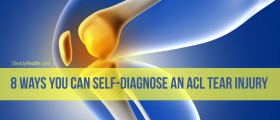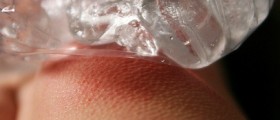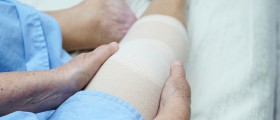Knee pain can be difficult to deal with, particularly at night. It is a common complaint, and can lead to serious medical conditions if not properly treated. Often, an individual might suffer from knee pain only during the night. The most common reason for this is that the pain occurs as a result of osteoarthritis. However, there may be other reasons for the nightly pain, so undergoing an x-ray might be necessary in order to determine the underlying cause of the pain.
Causes
Also known as degenerative joint disease, osteoarthritis is characterized by torn knee cartilage. Normally, this condition becomes manifested in those who are overweight or over the age of 50. Losing weight is a good way to fight the pain caused by this condition. Knee injuries often lead to the onset of osteoarthritis. Pain of this type can come during the night, but also during periods of changing weather.
Patellar tendinopathy is a commonly seen cause of nightly knee pain. The condition is prevalent among young people who are involved in sports that require a lot of jumping. Patellar tendinopathy occurs after injury to the patella. Normally the pain becomes aggravated by jumping or hopping. This problem will worsen over time, if not properly treated. The only healing methods for this condition are ice pack treatment, strengthening exercises and massage.
Also known as runner’s knee, chondromalacia patella can affect both the old and the young. It occurs due to irritation of the patella. Rubbing of the kneecaps against the knee joint can cause such an irritation. The best way to combat the pain felt as a result of this is to get a proper amount of rest. It might also be advised to undertake a good physical therapy program.
Ligament injury is another cause of knee pain. Three ligaments are found in the knee - the anterior cruciate, the posterior cruciate and the medial collateral. If the knee joint attempts to widen itself and becomes stuck, this can cause serious injury to the ligaments. Swelling will be visible if such an injury has occurred.
Located at the base of the patella, the fat pad can become impinged between the condyle of the femur and the patella, thus resulting in pain. Often, this condition remains unnoticed. Irritation of the fat pad can be extremely painful. Constant standing can worsen the pain, and the best way of providing pain relief is through rest.















-Symptoms,-Diagnosis,-Treatment_f_280x120.jpg)

Your thoughts on this
Loading...